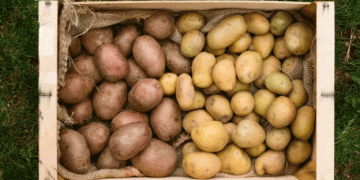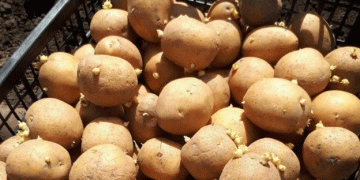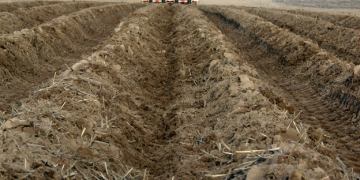AFBF President Duvall: Farming’s future depends on a reliable workforce and developing the next generation
he empty store shelves some of us faced last March and April at the onset of the pandemic gave many a better appreciation for the millions of hardworking men and women across the food chain– from farm fields to grocery stores – who keep our nation’s food supply secure, American Farm Bureau Federation President Zippy Duvall told attendees to the National Association of State Departments of Agriculture’s Winter Policy Conference.

reliable workforce
Those disruptions, though, were temporary; the security of our food supply was never in danger, Duvall emphasized. Farmers and ranchers were #stillfarming last spring, and they continue to do so today, as we head into the pandemic’s one-year mark.
“We wouldn’t still be farming, however, without skilled employees,” Duvall said.
He continued, “Worker shortages have been at a crisis level in agriculture for years now and finding enough people to fill the jobs available on the farm is a top concern.”
On the guest worker front, Duvall noted that demand for employees through the H-2A program continues to rise, with the number of certified H-2A positions three times higher than it was 10 years ago, according to Department of Labor data.
Along with a flexible guest worker program that allows contract and at-will employment options that meet both seasonal and year-round needs on the farm, we also need to make sure the program’s wage requirements take into account the economic conditions of the agriculture industry and enable farms to remain viable.
“Farmers are committed to paying their employees a fair wage, but the existing system [for H-2A wages] sets unpredictable rates that make it hard for farmers to remain competitive,” Duvall explained.
Recent AFBF economic analysis shows the Adverse Effect Wage Rate – the minimum farmers must pay their H-2A workers –jumped 4.5% from 2020 to 2021, on average. And that jump comes on the heels of several years of considerable wage rate increases. Over the last five years, the national average AEWR increased by 20%.
But wages are not just an issue for farmers who use the H-2A program. As Congress and the administration consider policies to help farmers, ranchers and their valued employees continue to feed and fuel this country, they must ensure a fair and competitive wage rate and provide a way for current undocumented workers to achieve legal status, while continuing to work in agriculture.

Farmers and ranchers will also be looking to Congress to help ensure all essential workers, including their employees, have access to the tools and resources they need throughout this pandemic, like PPE. Prioritizing farm employees in vaccine distribution is important, too.
“There is no doubt we have faced unprecedented challenges this last year, but we have faced all those challenges with resilience, demonstrating that we are stronger together across our great industry,” Duvall said.
All those involved in agriculture must build on that strength to cultivate the next generation of leaders. One of the ways to do that, according to Duvall, is to engage more young people from all backgrounds and regions and encourage the next generation to return to the farm — or get into farming for the first time.
“That means getting the word out on programs available to beginning farmers and helping train the next generation of leaders,” Duvall said, noting NASDA Foundation’s work to connect talented, diverse agricultural leaders to careers at state departments of agriculture.
Finding ways to be more inclusive will strengthen agriculture for decades to come, as will continued development of agricultural technology and innovation.
“We need to draw in the hardest workers and the brightest minds to tackle agriculture’s greatest challenges and celebrate our achievements together,” Duvall said.






